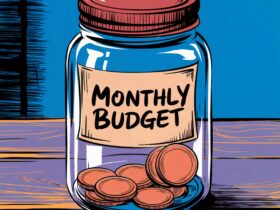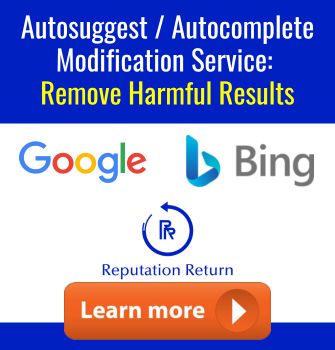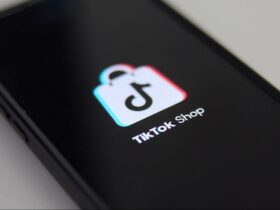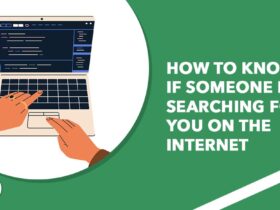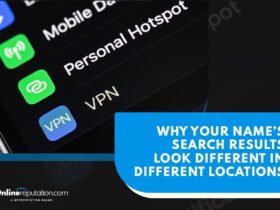A social media crisis can start fast and hurt a brand’s good name and money. It can begin with a bad tweet or a data leak. Then, it can get worse quickly.
Platforms like Twitter, Facebook, and Instagram can spread bad news fast. This makes it key to know how to handle a crisis online. If a brand doesn’t act fast, it can lose trust and loyalty quickly.
Key Takeaways
- A social media crisis can escalate rapidly and affect brand reputation.
- Effective crisis communication is essential to manage public perception.
- Negative incidents like data breaches can trigger severe backlash.
- Platforms such as Twitter and Facebook amplify the impact of a crisis.
- Quick response is vital in safeguarding brand trust and loyalty.
Understanding Social Media Crises
A social media crisis is a big problem that gets a lot of people upset. It can hurt a brand’s good name and how people feel about it. These crises happen when something bad is said or done online, like sharing the wrong stuff or losing customer info.
They are different from just getting some bad comments. A crisis gets a lot of people talking and can really hurt the brand’s image.
What Constitutes a Social Media Crisis?
A social media crisis is known by how much and how people react. It’s not just a few bad comments. It’s a big deal that gets a lot of people talking and can make people not like the brand as much.
Companies need to know how to handle these situations fast to lessen the damage.
Immediate vs. Long-term Consequences
Right away, a social media crisis can make sales go down and people trust the brand less. Over time, it can really hurt the brand’s good name and how much of the market it has. Looking at what happened with United Airlines and H&M can teach companies how to deal with these issues better.
Having a good plan means talking openly and acting fast. This can help fix how people see the brand and react to it.
For more tips on handling false info, check out this guide.
The table below shows what can cause a crisis and how it can affect a company:
| Trigger | Immediate Consequence | Long-term Impact |
|---|---|---|
| Objectionable Content | Widespread Outrage | Loss of Customer Loyalty |
| Insensitive Messaging | Viral Negative Publicity | Reputation Damage |
| Data Breaches | Legal Issues | Market Share Decline |
Recognizing the Signs of a Social Media Crisis
It’s key to watch for changes in how people feel about a brand early on. Tools that monitor social media can spot sudden increases in negative talk. This could mean a crisis is starting.
Looking at the patterns of these negative comments helps tell if it’s just a complaint or something bigger. A lot of bad talk, especially about sensitive topics, means it’s time for brands to act fast.
Monitoring Brand Sentiment
Social listening tools are vital for keeping an eye on how people feel about a brand. They track what’s being said online. This way, companies can tackle negative feedback early.
Real-time alerts let teams know when feelings about the brand change. This means they can act quickly. Using certain keywords can also help push out positive news to fight negative rumors. You can learn more about this here.
Identifying Patterns in Negative Mentions
Spotting patterns in negative comments is key to catching issues early. Look at how often, what tone, and where these comments come from. This helps figure out if it’s just a one-off or a bigger problem.
Keeping content fresh and using strong links can help calm things down when a crisis starts. Knowing how people react can tell if it’s just a complaint or something serious. Social listening tools make it easier to see and respond to these patterns.
Developing a Social Media Crisis Management Plan
It’s key for businesses to have a strong social media crisis plan. This plan should include crisis preparedness steps. These steps cover risk checks, action steps, and clear ways to talk to people.
Critical Elements of a Crisis Plan
A good crisis plan has ways to watch for trouble early. It’s important to make content and keep an eye on social media. Also, stop planned posts and give clear, quick answers.
Have teams for checking facts and talking to the media. This makes sure you cover all bases. Having flexible ways to communicate keeps things consistent.
Role Allocation and Responsibilities
It’s key to give clear roles in a crisis plan. Pick team members for tasks like watching, writing messages, and talking to people. This makes responding faster and clearer.
Knowing what everyone does helps avoid confusion. It also makes quick decisions easier during a crisis.
Establishing Social Media Guidelines
Creating social media rules is vital. They make sure crisis answers match the company’s values and voice. These rules should talk about tone, style, and how to handle bad feedback.
Following these rules helps manage risks from inside and keeps messages consistent. Also, use lessons from past crises to make these rules better for the future.
Securing Your Social Media Accounts
Keeping your social media safe is very important for businesses. They need to use strong passwords, two-factor authentication, and take away access from old employees. These steps help protect against hackers and keep your online talks safe and trusted.
Implementing Strong Passwords
Start by making strong, unique passwords for each social media account. Mix letters, numbers, and special characters to make them hard to guess. Change your passwords often to keep your accounts safe from hackers.
Two-Factor Authentication
Two-factor authentication (2FA) adds extra security. You need a second thing to prove who you are, like a code from a text or app. This makes it much harder for hackers to get into your accounts, even if they have your password.
Revoking Access for Ex-employees
It’s important to take away access from old employees right away. They could still use your social media in bad ways. By taking away their access fast, you keep your accounts safe and protect your data.
For more tips on keeping your online reputation safe, check out this link.
Monitoring and Analyzing Social Media Mentions
It’s key to watch closely for early warnings. Brands need to use full
Using Social Media Monitoring Tools
For good social media analysis, companies should pick top tools. These tools help track what people say about the brand on different sites. They give a full picture of what people think.
Real-Time Sentiment Analysis
Doing sentiment analysis in real-time lets brands see how people feel fast. This quick info helps brands understand what’s being said. It lets them act fast and stop problems before they get worse.
Setting Up Alerts for Sudden Spikes
Alerts for big jumps in mentions tell brands when things are getting talked about a lot. These alerts are key for quick action and keeping the story on track.
By using social media tools, analyzing feelings, and setting alerts, brands can keep up with their online image. They can also handle crises well.
Creating a Crisis Communication Plan
A good crisis communication plan helps you respond well when your reputation is at risk. It has key messages, picks spokespeople, and explains how to check public statements. This makes sure you talk fast but also right, to not make things worse.
Drafting Messages for Rapid Response
Having a plan for quick responses helps you talk clearly and consistently in tough times. You can quickly answer concerns with pre-made messages. It’s key to be kind and clear to keep people trusting you.
Internal and External Communication Channels
Good communication means clear rules for talking inside and outside the company. Using emails, social media, and press releases helps you reach everyone. It’s also important to keep your team informed and working together.
Approval Process for Official Communications
It’s important to check all official messages carefully. This means going through several reviews with important people, like lawyers. This way, you make sure messages are right and safe for your brand.
A good crisis plan includes quick responses, clear ways to talk, and strict checks. For more tips on handling online criticism, check out Reputation Return. Using these tips and talking to your stakeholders can help you handle crises well.
Real-Time Engagement During a Crisis
Being able to talk to customers in real-time during a crisis is key for businesses. They need to keep up on social media, give updates, and talk to the public. Doing this quickly helps fix the crisis.
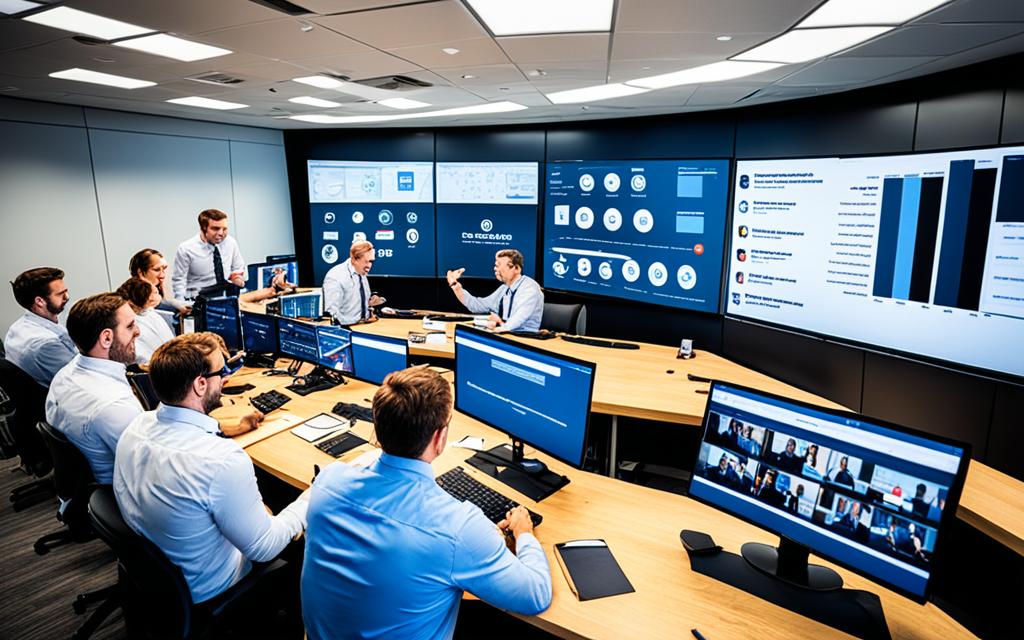
A team that knows what to do is vital for real-time talks. They use a detailed plan to make sure everything is clear and follows the company’s goals. By giving updates often and being open, businesses can calm things down and make customers feel safe again.
Using technology to watch and answer to events is also key. Tools that listen to social media help spot what people are saying fast. This lets companies answer quickly and right. According to an Internet reputation management guide, being proactive is key to solving a crisis.
Here’s what you need for real-time talks during a crisis:
- Keep an eye on social media for mentions and feelings
- Give your team clear messages and rules
- Use tools that help talk to customers fast and right
- Talk to everyone, not just a few
- Be open to build trust
Talking to your audience in a crisis helps solve the crisis and keeps customers loyal. Having a strong social media presence shows you care about your customers. This helps with your reputation.
Response Strategies for Viral Negativity
When negativity goes viral, we can change the story with smart moves. By tackling issues fast, we show we’re listening and taking responsibility. Showing empathy and being open builds trust and makes the brand feel real.
Take Pepsi’s bad ad and Starbucks’ racial issue. Saying sorry and fixing things was key. We can turn negatives into positives by changing rules, sticking to our values, and talking openly to fix and even boost our image.
Addressing Negative Comments Proactively
It’s key to tackle negative comments right away. Quick and smart responses help control the story and show we value our customers. This helps in calming down a crisis and makes our public image stronger.
Demonstrating Empathy and Transparency
Being empathetic and clear is crucial for good PR. Saying sorry and being open about fixing things turns a crisis into a chance to grow stronger. Being open builds trust and makes sure our actions match what customers expect, making our brand stronger.
When Howard Schultz came back to Starbucks after a racial issue, he showed empathy and openness. This helped Starbucks recover in the public eye.
Turning Negativity into Positive Engagement
Turning negatives into positives is more than fixing mistakes. It’s a chance to strengthen our brand and talk well with our audience. Important steps include fixing search results, saying sorry publicly, and watching online talks. For more tips on handling these situations, check out Reputation Return.
| Strategy | Benefits | Examples |
|---|---|---|
| Proactive Addressing | Demonstrates responsiveness and concern | Pepsi’s public apology for insensitive ad |
| Empathy & Transparency | Builds trust and humanizes the brand | Starbucks’ response to a racial incident |
| Positive Engagement | Reinforces brand values and invites constructive dialogue | Amendment of policies and enhanced customer interactions |
Case Studies of Social Media Crisis Response
Looking at brand crisis case studies shows us how to handle crises well. Companies like Boeing and KFC faced big PR challenges. But they used different ways to deal with them. Boeing was quick and open about the 737 Max disasters. crisis response checklist.
KFC made a product shortage into a funny and honest moment. This shows how being kind and honest can help fix a brand’s image. Past crises teach us the importance of having a good plan for managing them.
From these examples, we see that planning and doing well are crucial. Real stories show us how fast, caring words can help during tough times.
- Boeing 737 Max Disasters
Being open and quick helped fix the problem. - KFC Product Shortage
Humor and honesty turned a crisis into a big hit.
Learning from Past Crises
In the world of social media, learning from past crises is key. It helps with crisis prevention and managing a good reputation. Looking at past crises gives us insights on how to get ready and react to future ones. It shows us the importance of knowing what people expect and what they think is right.
Notable Examples and Lessons Learned
Gillette faced a big backlash with its “toxic masculinity” ad. The ad aimed to tackle a big issue but got a lot of negative feedback. This shows how brands need to be careful when talking about sensitive topics.
Lululemon also got a lot of negative feedback about their products. They showed the need for good communication and understanding. These stories teach us to keep updating our crisis plans with historical analysis and watching online.
Adapting Strategies Based on Previous Incidents
Every social media crisis is a chance to learn. What works once might not work again. It’s important to keep changing and updating our crisis plans.
After seeing the backlash on some campaigns, brands might make new rules. These rules help avoid problems and guide on how to talk and be open. This way, brands get better at handling crises and keeping a good reputation.
Using these strategies and learning from past mistakes can make a brand stronger against social media crises. It’s key to keep a crisis plan that changes with new challenges. Using history helps us prevent crises better and stay proactive in keeping a good online image.
Platform-Specific Strategies
Handling a social media crisis needs special plans because each social network is different. Using the right social network tactics helps a lot. Knowing how to use Facebook, Twitter, and Instagram helps brands make good responses and fix problems.
Facebook: Managing Community Outrage
On Facebook, you need to talk to your community calmly. Keep talking and listening to them to stop things from getting worse. Showing you care and talking with users can help a lot.
It’s important to get good reviews and professional help to keep trust during a crisis.
Twitter: Rapid Response to Tweets
Twitter moves fast, so you need to act fast too. Quick messages can stop wrong info from spreading. Watch what people say about your brand and have plans ready for emergencies.
By talking quickly and clearly, you can keep your brand in line with what people expect on Twitter.
Instagram: Visual Crisis Communication
Instagram is all about pictures and videos, so your crisis plan should be too. Pictures and videos can show you’re serious and caring. Use Instagram Stories and posts to keep your followers updated and calm.
Using more pictures can help keep people interested and change how people see your brand.
Using these special plans for each platform helps brands deal with crises better. Tailoring your plan to each platform’s strengths makes your crisis response stronger.
The Role of Influencers in Crisis Management
In today’s digital world, influencer partnerships are key in handling social media crises. They have a big following and are trusted by their fans. This makes them great at credibility building during tough times.
Using influencers helps brands share strategic messaging that hits home with their fans. By working with influencers, brands can make their message feel real and reach more people. This is super helpful when you need to quickly fix bad news and calm people down.
Nike is a great example of how influencers can help in a crisis. They work with famous people who share their values. This turned bad news into a chance to connect with people in a good way. These influencer partnerships helped build trust and made sure their message was clear and true.
Picking the right influencers is very important. They must share the brand’s values to keep things consistent. This careful choice makes sure the partnership feels real and has a big impact. It helps connect the brand with its audience strongly.
“Influencers are not just about numbers; their real value lies in the trust and connection they have built with their audience.”
For brands facing crises, using influencer partnerships is a must. It’s not just an option, but a key part of handling a crisis well.
Evaluating Your Crisis Response
After the danger is gone, it’s key to check how you handled the crisis. Look at what worked and what didn’t. This helps make things better for next time.
Post-Crisis Analysis
Looking back, see what steps were good and what weren’t. Review every move made during the crisis. Find out what’s strong and what needs work. This way, brands can get ready better for the next crisis.
Adjusting Strategies for Future Crises
After looking at what happened, it’s time to change plans. Add new ideas and lessons learned to your crisis plan. This makes you stronger for the next crisis.
Measuring the Impact on Brand Sentiment
Checking how people feel about your brand after the crisis is important. Look at how opinions changed before, during, and after. This helps you know how to talk to people better.
| Metrics | Pre-crisis | During Crisis | Post-crisis |
|---|---|---|---|
| Brand Sentiment | Positive | Negative | Neutral |
| Engagement Rate | High | Low | Recovering |
| Public Trust | Stable | Fluctuating | Improving |
| Response Time | N/A | Immediate | Immediate |
Conclusion
Social media crises can really test a brand’s strength and how it reacts. It’s vital to act fast and have a good plan to keep trust and reputation safe.
Learning from past crises is very important. Companies like JetBlue and Starbucks show us how to quickly fix problems and be open with people. They also show us how to use what we learn to grow stronger.
Being active with your audience is also key. Using social media well and talking to people right away helps brands deal with surprises. By handling negative comments and working with influencers, a crisis can become a chance to make your brand stronger. In today’s digital world, being ready and proactive is just as important as reacting fast.
FAQ
What Constitutes a Social Media Crisis?
A social media crisis happens when people strongly dislike something a brand did. This can be because of bad content, not caring words, or losing customer data. It’s worse than just getting negative feedback because many people are upset.
What Are the Immediate and Long-term Consequences of a Social Media Crisis?
Right away, a crisis can make sales go down and hurt customer trust. Over time, it can really damage a brand’s good name and how much of the market it gets.
How Can Brands Monitor Sentiment to Spot a Crisis Early?
Brands use tools to watch how people feel about them in real time. This helps them see when lots of people are talking badly. It helps them tell if it’s just a normal complaint or something big.
What Critical Elements Should Be Included in a Crisis Management Plan?
A good plan should say who does what, how to find crises early, and how to talk to people. It should also have steps for stopping posts and answering quickly with one voice.
How Important Is Security in Preventing Social Media Crises?
Very important. Using strong passwords, having two-factor authentication, and taking away old employee access helps keep social media safe. This stops bad people from getting into accounts.
How Can Social Media Monitoring Tools Aid in Crisis Detection?
These tools watch for mentions of a brand, check how people feel, and warn about big changes in what people are saying. This helps brands understand what people think fast and act quickly.
What Is the Key to Effective Crisis Communication?
It’s about making key messages, picking people to talk for the brand, and checking public statements fast. Keeping messages the same inside and outside helps stop wrong info from spreading.
Why Is Real-Time Engagement Vital During a Crisis?
Talking in real time lets businesses fix problems, share news, and talk to people as things happen. This helps calm the crisis, make people feel safe, and start fixing the brand’s image.
How Should Brands Respond to Viral Negativity?
Brands should deal with problems fast, be kind, and be open. Using bad news as a chance to connect with people shows they care and builds trust.
Can Learning from Case Studies Improve Crisis Response?
Yes, learning from past crises, like Boeing and the 737 Max, teaches valuable lessons. Brands see how being kind, honest, and creative in communication can help in future crises.
How Do Platform-Specific Strategies Differ in Crisis Management?
Each social media site needs its own plan. For example, Facebook is about talking with the community, Twitter is about quick answers, and Instagram is about pictures to show honesty and fix things.
What Role Can Influencers Play in Crisis Management?
Influencers can make a brand’s message sound trustworthy because they know their audience well. Choosing influencers who share the brand’s values helps in fixing a crisis.
Why Is Post-Crisis Analysis Crucial?
Looking back at a crisis helps see what worked and what didn’t. This helps improve plans for the next crisis. It also shows how people feel over time, helping with ongoing communication.






